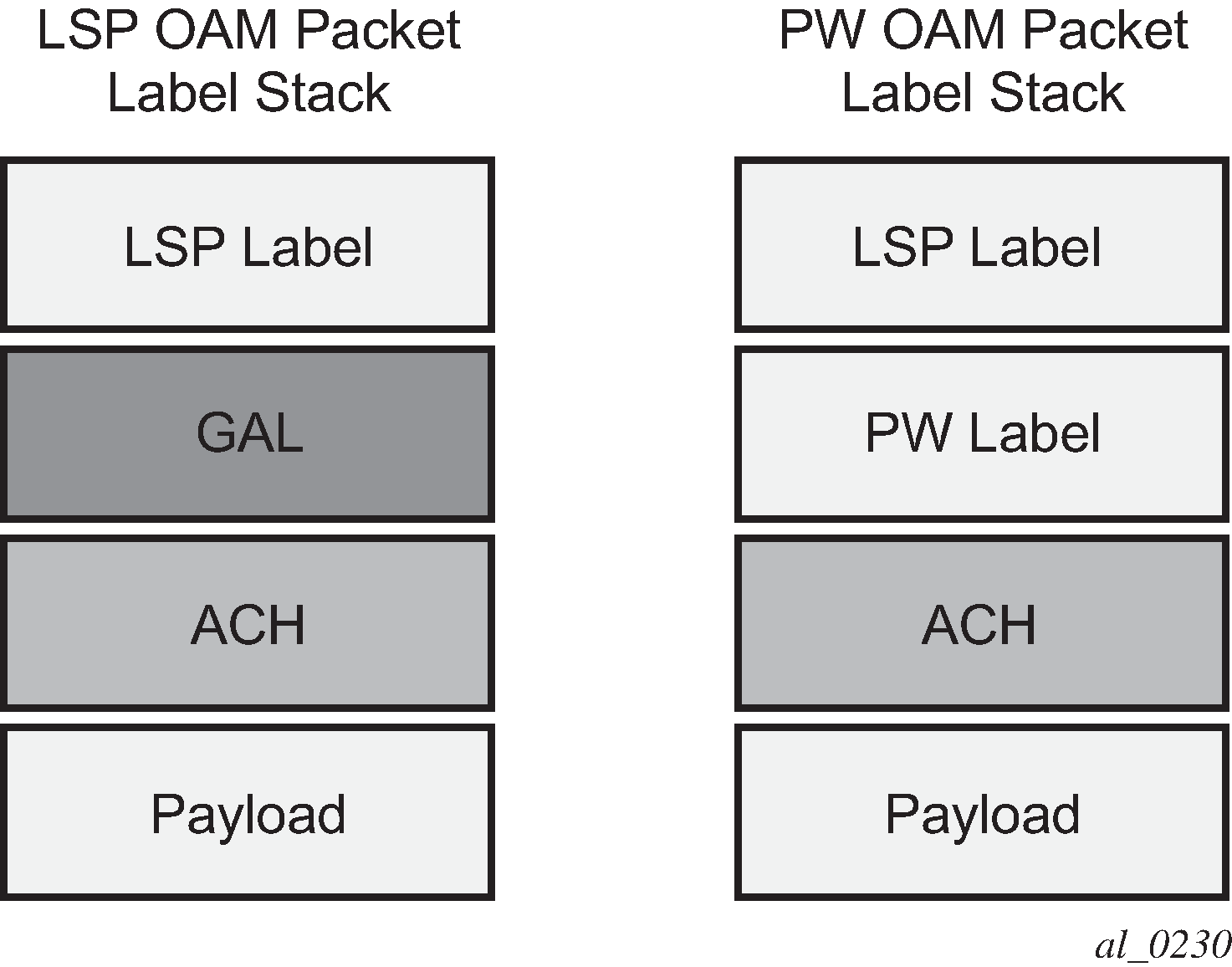MPLS-TP requires that all OAM traffic be carried in-band on both directions of an LSP or PW. This is to ensure that OAM traffic always shares fate with user data traffic. This is achieved by using an associated control channel on an LSP or PW, similar to that used today on PWs. This creates a channel, which is used for OAM, protection switching protocols (for example, LSP linear protection switching coordination), and other maintenance traffic., and is known as the Generic Associated Channel (G-ACh).
RFC5586 specifies mechanisms for implementing the G-ACh, relying on the combination of a reserved MPLS label, the Generic-ACH Label (GAL), as an alert mechanism (value=13) and Generic Associated Channel Header (G-ACH) for MPLS LSPs, and using the Generic Associated Channel Header, only, for MPLS PWs (although the GAL is allowed on PWs). The purpose of the GAL is to indicate that a G-ACH resides at the bottom of the label stack, and is only visible when the bottom non-reserved label is popped. The G-ACH channel type is used to indicate the packet type carried on the G-ACh. Packets on a G-ACh are targeted to a node containing a MEP by ensuring that the GAL is pushed immediately below the label that is popped at the MEP (for example, LSP endpoint or PW endpoint), so that it can be inspected as soon as the label is popped. A G-ACh packet is targeted to a node containing a MIP by setting the TTL of the LSP or PW label, as applicable, so that it expires at that node, in a similar manner to the SR OS implementation of VCCV for MS-PWs.

The system supports the G-ACh on static pseudowires and static LSPs.